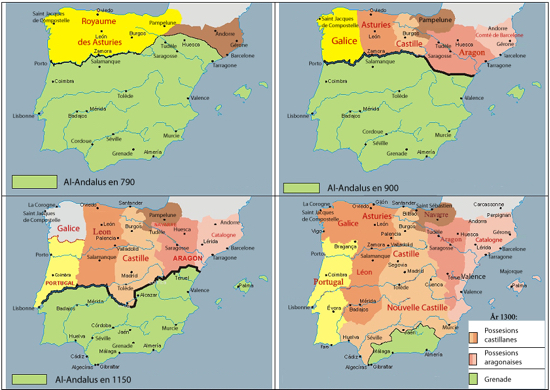Bi-Cultural Pie

Murcian meat pie is a piece of bakery that’s literally split between two cultures. The top is made from roll-laminated dough, which as I discussed last week was invented by Arab pastry makers sometime before the Renaissance (exactly when isn’t well established). The bottom crust is more like a traditional European pie, made of short crust.
The filling in between is, as you might expect, an amalgam. On the one hand you have a good deal of meat — including and especially pork — which became popular in Spain, as you might expect, only after the Arabs were driven out. That being said a touch of the Arabic influence remains in the spicing: cinnamon, which arrived in Spain by way of the Arab Moors when they conquered the Iberian Peninsula in 720 A.D..
If you wonder why this style of pie endures in Murcia and nowhere else in Spain, the map above might give a clue. It shows the steady shrinking of “Al Andalus”, the Muslim-dominated portion of Spain, over a period of several hundred years. Murcia is down there in the southeast corner, which as you can see was one of the last regions of the peninsula to be retaken during the “Reconquista” or “reconquering” of Spain by northern Christians. Murcia didn’t fall until 1243 and remained heavily Muslim for many decades thereafter, which means the locals had about 600 years to develop a taste for this style of pie. Even after the very last of the Moors were driven out of Spain in 1492 they kept it. It was that good.